#Nahmavis
Explore tagged Tumblr posts
Note
Do you have any favourite bird fossils?
I actively study fossil birds so that's actually really hard for me to pick just one :') like... all of them
this one of Nahmavis from Green River has always been one of my favorites though
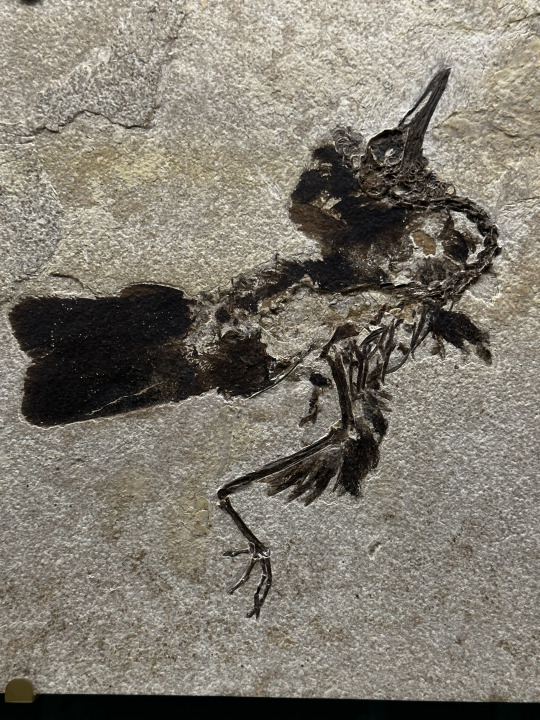
544 notes
·
View notes
Text
Fossil Novembirb: Day 10 - Bayou in the Badlands
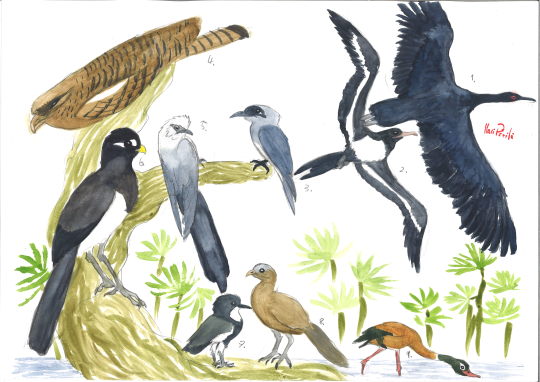
The modern landscape of the American west is but a far cry from its past. Early Eocene Green River formation preserves an incredible snapshot of time 50 million years ago. The locality of these fossils was once a huge lake system bordered by forests of sycamore and palmettos, and teeming with animals of all kinds, including birds, which were in the middle of an enormous radiation of forms.
Calciavis: A palaeognath which was a member of the lithornithids. Like them, it fed on insects from the forest floor and was a powerful flier. Some fossils preserve colour pigments of its feathers, suggesting this bird was a glossy black.
Limnofregata: The earliest known frigatebird that flew over the water just as its aeronaut descendants. Like modern frigates, it plucked prey from the water and the shorelines of the lake system.
Plesiocathartes: A bizarre bird that has had a complicated history. Now we know that it was an early relative of the cuckoo-roller from Madagascar and probably lived a similar lifestyle.
Celericolius: An early member of the mousebird family that had long wings and even longer tail. It may have flown at high speed through the forests.
Foro: This american bird is in fact an early member of turacos, birds which are unique to Africa today. Like them, it mostly fed on soft fruit.
Prefica: A strange bird who'se closest living relative is the oilbird of South America, which is a nocturnal frugivore. It could be that this ancient relative lived in a similar way.
Nahmavis: An early member of the shorebird family known from a spectacular fossil that preserves feathers.
Gallinuloides: The earliest known true galliform, this small fowl was among the early ancestors of guans, quails, turkeys and grouse.
Presbyornis: A widespread wading waterfowl related to ducks and geese. Sometimes called the flamingo-duck, it used its flat bill to filter its food, and may have nested in colonies like flamingos.
#Fossil Novembirb#Novembirb#Dinovember#birblr#palaeoblr#Birds#Dinosaurs#Cenozoic Birds#Calciavis#Limnofregata#Plesiocathartes#Celericolius#Foro#Prefica#Nahmavis#Gallinuloides#Presbyornis
48 notes
·
View notes
Text
Fossil Novembirb 10: Bayou in the Badlands

Fluvioviridavis by @quetzalpali-art
Back to Eocene Ecosystems! One of the most famous Eocene fossil sites in the world is the Fossil Lake site of the Green River Formation, an ecosystem from Colorado in the United States. This ecosystem records the transition from the moist forested world of the early Eocene to the drier warm world of the mid-Eocene. The forests would begin to shrink back, the foliage would change, and so would the animals.
Fossil Lake records the start of that process! Sediment would regularly settle into this lake at periodic intervals, which then recorded the evolution of the lifeforms there over thousands of years. The forests were filled with sycamore trees and other broadleaf plants, as well as ferns.

Limnofregata by @iguanodont
Because the lake was so frequently filled with sediment, oxygen levels were low to nonexistent, preventing decomposers from living at the bottom of the lake. This lead to many different organisms being preserved nearly perfectly, including many gorgeous birds!
In fact, the Field Museum of Chicago - my home - has many of these wonderful fossils on display, and have fascinated me since childhood. So I'm going to break format a little here to showcase some of these fossils.

Cyrilavis, a Halcyornithid (Parrot-Passerine of Prey)
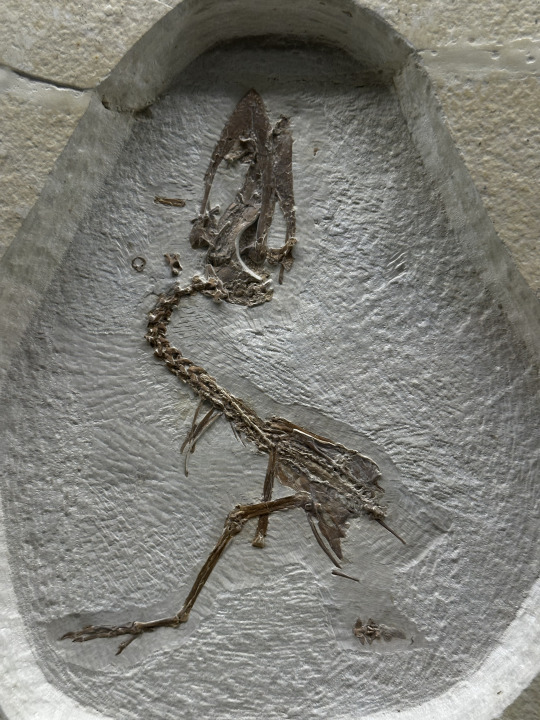
Fluvioviridavis, a Strisorian (like oilbirds or frogmouths)
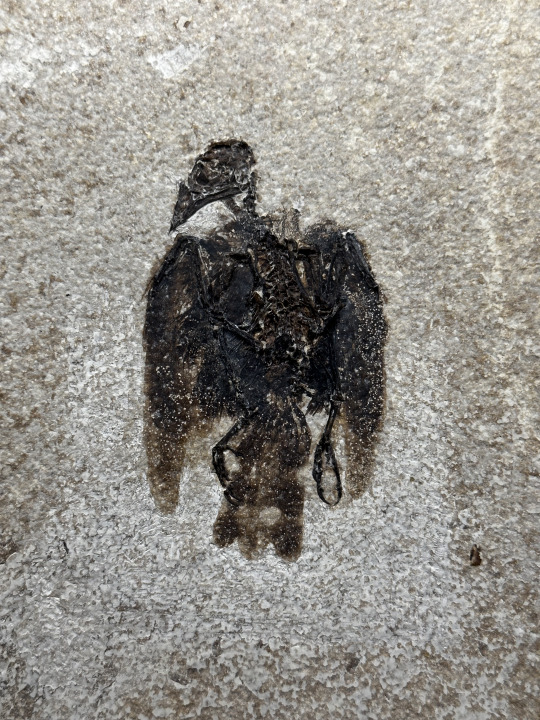
Eofringillirostrum, a Passerine

Limnofregata, a Frigatebird in a Gull Niche

Nahmavis, a relative of shorebirds (Charadriiformes) or rails and cranes (Gruiformes)
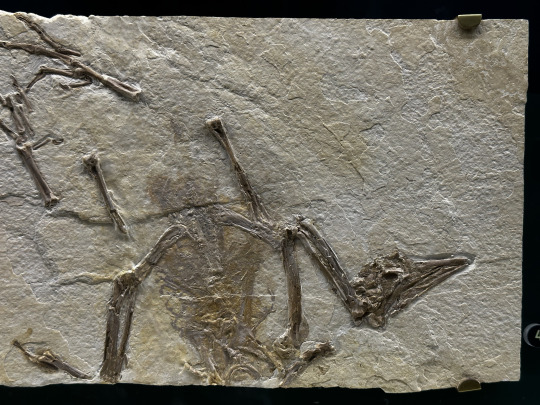
An unnamed Anseriform, probably similar to Anachronornis

Celericolius, a mousebird

Zygodactylus, a stem-passerine
We see once again in this ecosystem - as we have in the others we've covered - the common theme of Avian evolution: the niches may stay the same, but the birds filling them will always change. We have Mousebirds perching in trees in North America, we have Frigatebirds filling the Gull niche, ducks wading around the lake like flamingos, and cousins of parrots/passerines hunting prey.
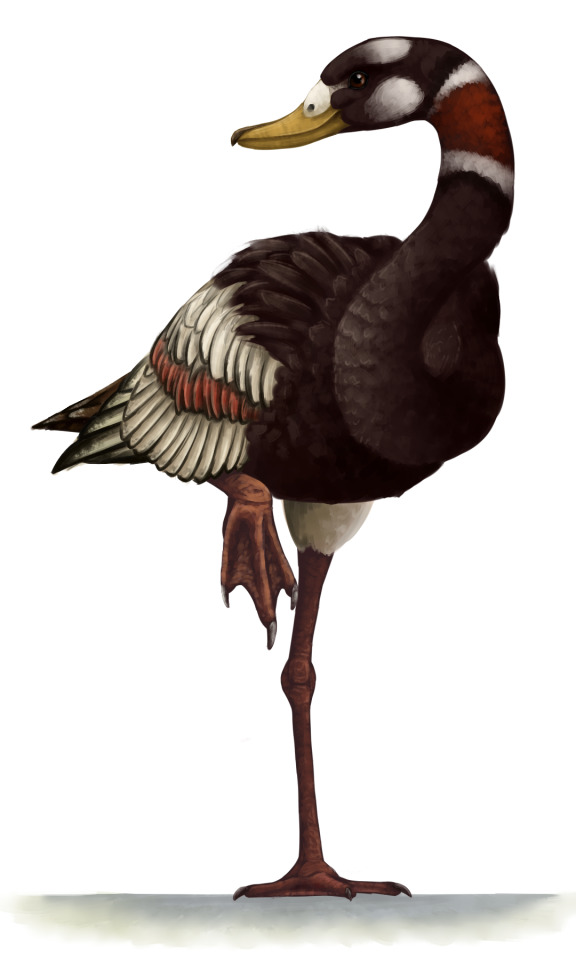
Presbyornis by @drawingwithdinosaurs
Other notable dinosaurs from this formation include Presbyornis, another one of those Flamingo-Ducks we've talked about like Teviornis and Conflicto; Gastornis because it was literally everywhere from the latest Paleocene through the early Eocene; Lithornithids like Pseudocrypturus because they were also everywhere; early landfowl like Gallinuloides; the cuckoo-roller Plesiocathartes; the ibis Vadaravis; and the turaco relative Foro. Once again, we see many tropical birds in places where they aren't today, due to the extensive warm climate of the Early Eocene.
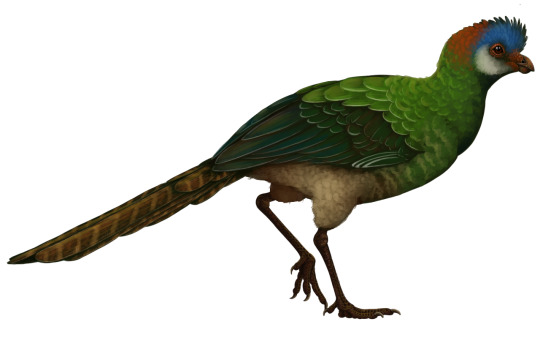
Foro by @drawingwithdinosaurs
This swampy ecosystem was filled with large crocodile relatives, small mammals, the earliest known bats, giant lizards, and an alarming number of fish - making it one of the better known ecosystems of the early Paleogene. But the best known Paleogene fossil location is still to come...
Sources:
Grande, L. 2013. The Lost World of Fossil Lake: Snapshots from Deep Time. University of Chicago Press.
Mayr, 2022. Paleogene Fossil Birds, 2nd Edition. Springer Cham.
Mayr, 2017. Avian Evolution: The Fossil Record of Birds and its Paleobiological Significance (TOPA Topics in Paleobiology). Wiley Blackwell.
106 notes
·
View notes